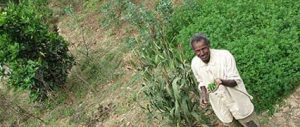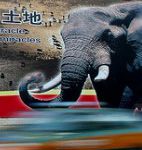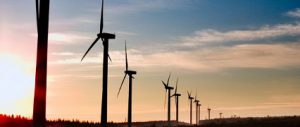Since the workers from Vale, Brazil’s giant mining company, started to drink at his bar, fortune has favoured Mario Sálimo. With business growing week by week, the 47-year-old has opened extra rooms, added a restaurant and installed a dance floor.
At weekends Mario’s Bar, near the clogged and dusty centre of Tete, is open until five or six o’clock in the morning. And the bar is not the only thing booming in this remote Mozambican town, which grew up as a trading post on the Zambezi river.
Tete sits directly above one of the world’s largest reserves of high-quality coal, and investment is pouring in, with Brazilian, Australian, Indian and other interests committing hundreds of millions of dollars to mining projects. As with Angolan, Nigerian or Sudanese oil, the industrial growth of China and India is driving demand.
No coal has yet been mined at the huge open pits that are planned, but foreign technicians, engineers and geologists, along with migrant workers from neighbouring rural provinces, have begun to make their homes in Tete. The city’s population has almost trebled to about 300,000 in a decade or so.
Property prices are rising, with rents more than doubling in the past year. “It’s like a snowball,” says Sálimo. “It was a city without expectations. Now everyone wants to come here.” And each week small businesses – accountants, information technicians and hairdressers – are springing up.
The coal reserves are the reason for everything. Specialists say they are the most valuable to be discovered anywhere in the world since production began at the Bowen Basin in Queensland, Australia, in the 1960s.
Tete has billions of tons of both thermal coal – used in power plants – and harder, more expensive coking coal, which is mixed with iron ore to make steel. The coal is just below the surface, runs to depths of 30 metres and is relatively cheap to mine.
“You have heard of the scramble for Africa. This is the scramble for coal,” says Felix Fischer, the representative of the International Monetary Fund (IMF) in Maputo, Mozambique’s capital. He says big investments in titanium, aluminium, gas and other resources are steadily transforming the country’s prospects. The growth rates achieved during the past 17 years are comparable to those of the east Asian economies in the 1970s and early 1980s.
With Vale expecting to start exporting coal later this year, that rate of expansion looks set to increase. Australia’s Riversdale, which has reserves of about 13 billion tonnes but does not plan to begin production until the middle of next year, has been besieged by potential buyers who want to secure long-term supplies.
Steve Mallyon, managing director of Riversdale, says eight power plants in India and three steel factories in China are “screaming for product”. He adds: “Twelve months ago, China wasn’t even on our horizon.”
Other operators are queuing up to get involved. Two large Indian coal groups – Jindal and Coal India – both have concessions in Tete. So does Ncondezi, a start-up company aiming to raise US$60 million through an initial public offering in London.
The big difficulty is how to get the product to market. A railway that runs from the port of Beira to Moatize, about 50 kilometres north of Tete, was brought back into operation this year by Indian operators. But its capacity – and that of the port – is limited.
Vale wants to develop another railway through Malawi to the coast at Nacala, where it plans to build a port. Riversdale is looking at shipping coal on barges down the Zambezi to Beira, where port facilities are planned.
Some observers are sceptical. “I was amazed how companies were putting so many millions into coal development without knowing how they would get it to the market,” says Fischer at the IMF.
But Mallyon says: “Once you have the resource, it justifies the spending on infrastructure going forward.” He adds that Tete’s existing infrastructure is better than that found in the remote reaches of Australia in the 1960s when mining companies began to exploit the Bowen Basin. “There was no airport, no telecommunications and no water for half the year,” he says.
Nonetheless, even before production has started, Tete’s infrastructure is creaking. The national airline struggles to fly the one commercial flight a day to Maputo. The 1950s suspension bridge, linking the coal fields to the city itself, seems to be in a permanent state of disrepair, with queues of trucks waiting to cross. Electricity, water and rubbish collection leave much to be desired.
And there are signs that Tete’s poorer residents resent the disruption. Subsistence farmers have been moved from their homes and land to new model villages, making way for digger trucks to start digging the coal. “People were unhappy about the way Vale moved them,” says Tomas Selemane, a researcher at the Centre for Public Integrity in Maputo. “There wasn’t enough consultation with them.”
Workers are glad to find employment, but the number of jobs offered by Vale and Riversdale is relatively small – a few thousand workers have been taken on. Those looking for work vastly exceed the number of jobs available, pushing down wages accordingly.
Armando Rasil, 38, is one Tete resident who is fortunate enough to have found a job with Riversdale, but he struggles to feed his family on a monthly salary of US$110. “Things are changing here, but I still don’t feel established,” he says.
At Mario’s Bar, however, the mood is upbeat. “People can think about the future now. They have plans,” says Sálimo, who says he is buzzing with business ideas and plans to buy a nearby apartment block. “We didn’t have anything before. Now perspectives are changing.”
Copyright © The Financial Times Limited 2010
Homepage image shows a coal outcrop at the Benga project in Mozambique. Photo courtesy of Riversdale 2010


